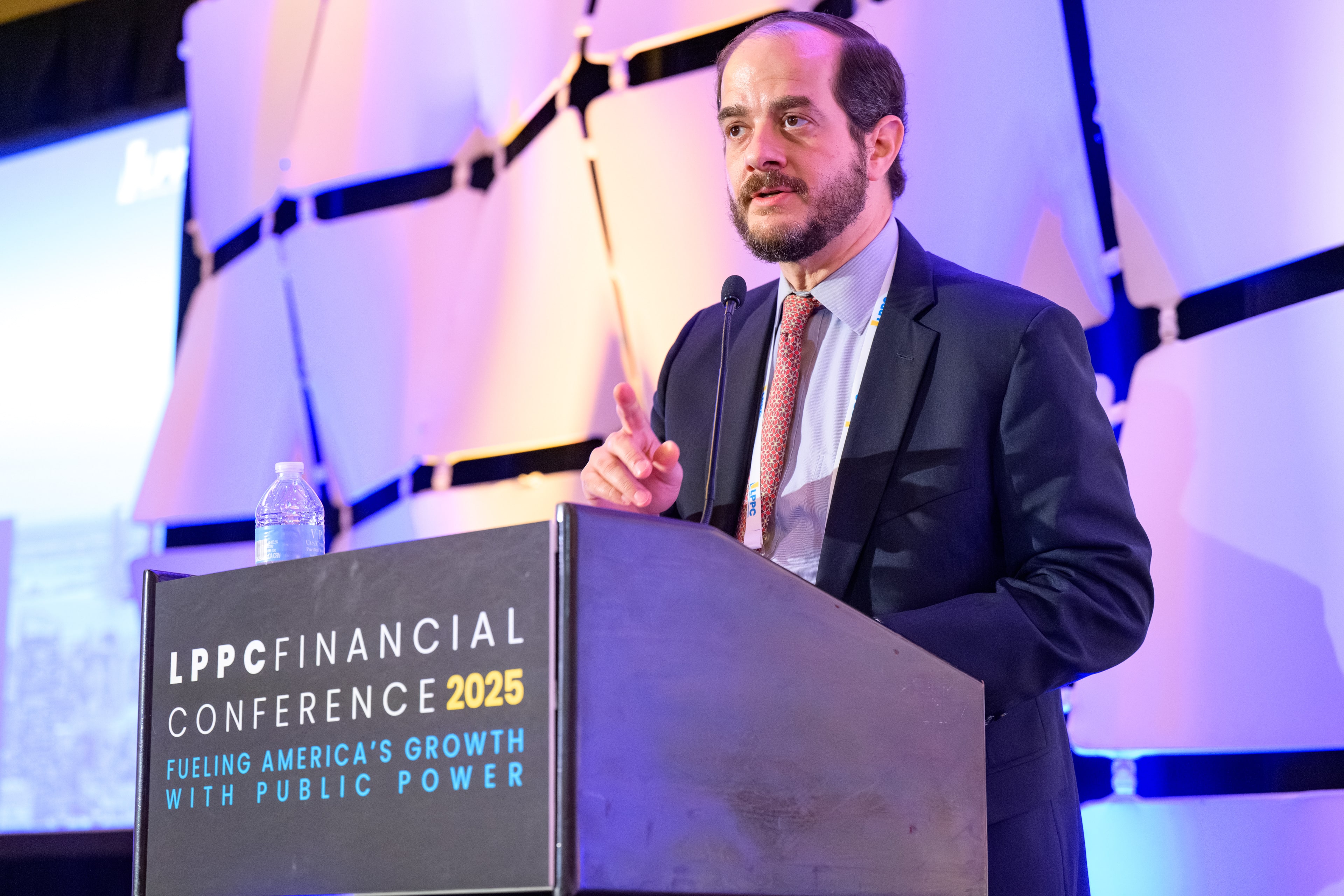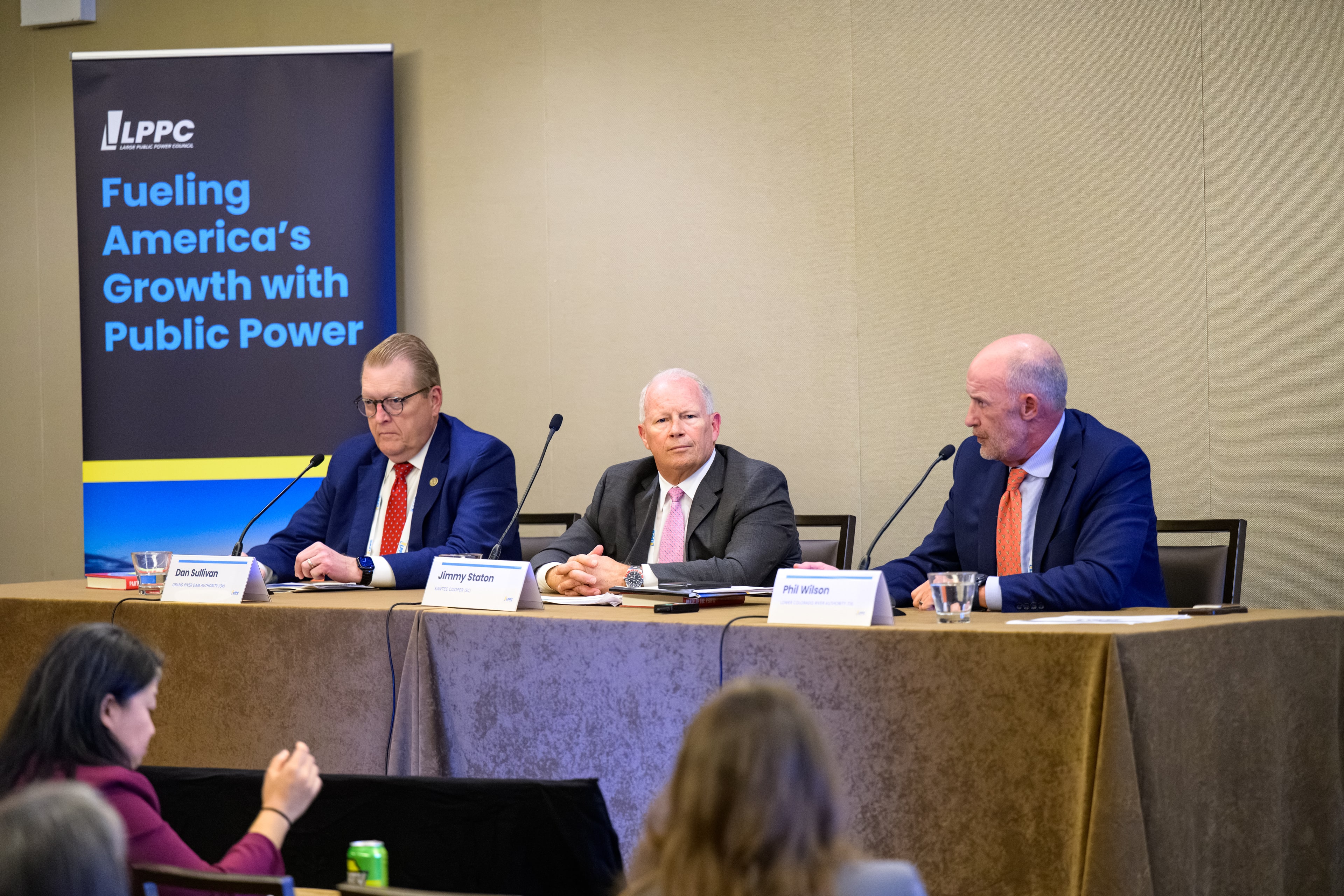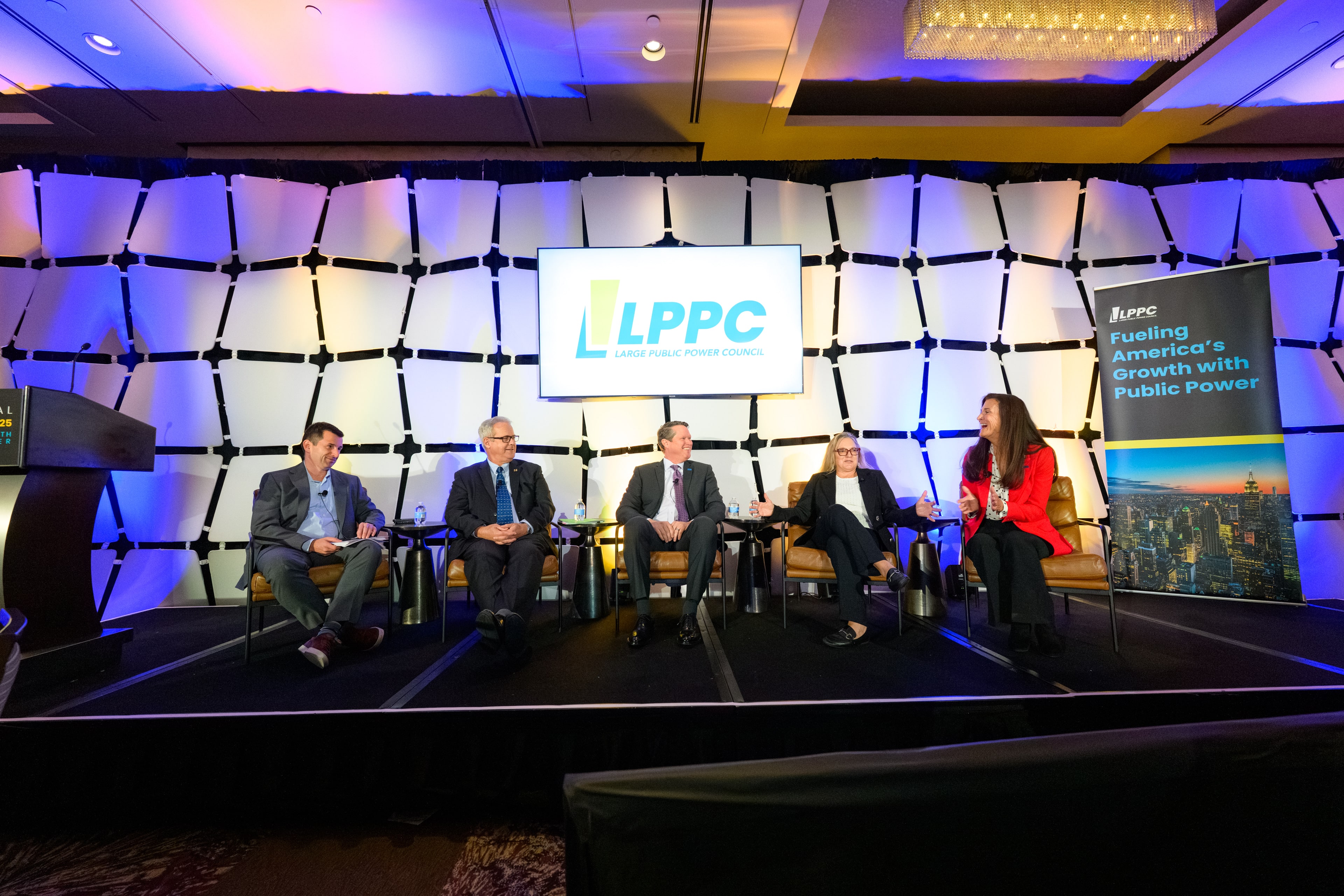Public Power Leaders Discuss Surging Load, Reliability, Affordability, and Sustainability with Investors and the Financial Community

LPPC member CEOs and CFOs convened with investors and the financial community in New York City for the Large Public Power Council’s (LPPC) 2025 Financial Conference on October 2-3. The two-day event focused on how public power utilities will serve AI and data center growth, economic expansion, and electrification, while maintaining reliability and affordability. Sessions included topical CEO panels, expert briefings on industry trends, and utility-specific presentations.
Conference materials are available here.
Across panels, participants tackled financing and permitting challenges, supply-chain pressures, and the technologies needed to deliver reliable, low-carbon power. With electricity demand climbing, LPPC members outlined plans for $140 billion in infrastructure investments and 58 gigawatts of new generation and transmission, a historic buildout. Members discussed near-term projects in their capital plans, including transmission upgrades, new firm generation, clean-firm resources, renewables, and storage.

The bottom line: after 20 years of flat-to-declining load, many systems now face large and sudden growth. One of the most talked-about causes of rising demand is AI-driven data centers. For some public power providers, energy requests from data centers exceed the total consumption of all existing customers combined. Typical single-site requests can be on the order of 500-1,000 MW, with customers seeking power in 2-3 years while grid infrastructure often takes 6-7 years to permit and build. The scale and speed differ from past growth and require clear cost-allocation and risk-management.

Utilities described practical approaches to match pace and risk such as “bring your own generation” (BYOG) and long-term customer contracts that right-size investment. Omaha Public Power District’s Javier Fernandez discussed its recent and planned generation additions, while highlighting large loads that assigned capacity contracts to help bring service faster and meet sustainability goals. And Lower Colorado River Authority’s Phil Wilson outlined its $5 billion transmission program over five years, including Texas’s first 765-kV line, to “make the grid work” while welcoming load that shares in the solution. Members also emphasized that long-term contracts with customers are constrained by out-of-date Treasury “private use” rules for tax-exempt bonds; LPPC is seeking narrow updates to IRS guidance, so growth pays for growth without shifting risk to existing customers. Disciplined contracting also helps screen “phantom” requests so resources go to customers with executable projects.

Another prominent theme was how public power utilities are managing rapidly shifting risks, from extreme weather events and cyber threats to policy and regulatory change. Public power’s community-based model and flexible governance structures are key strengths in adapting to uncertainty. JEA’s Vickie Cavey stressed what investors can look at to know a utility is prepared, such as the importance of scenario planning, system restoration metrics, mutual aid partnerships, and cyber readiness. Members also flagged supply-chain bottlenecks (e.g., gas turbine and high voltage-equipment lead times) and the need to streamline interconnection and permitting to keep projects on schedule.

Affordability featured prominently. Members stressed shielding existing customers from speculative risk and ensuring large-load tariffs/contracts align costs with the drivers of new investment.
External presenters including KPMG, Fitch Ratings, McKinsey & Company, and Echelon Insights underscored the broader political-economy context, the build cycle, and the investor lens: public power utilities have de-levered over the last decade, starting a build cycle from strong financial metrics, compared to a wider utility sector that is capital constrained. A useful framing: utilities represent 5% of the S&P 500, but the other 95% of the economy cannot function without them; while many investor-owned utilities need to raise equity capital to fund today’s investments, public power retains the financial capacity to invest prudently to help grow our communities and meet our nation’s energy and AI goals.

Public power’s message to markets was simple: we’re building—responsibly and transparently. Success in this cycle hinges on three moves already underway: (1) pairing long-term, cost-aligned contracts with targeted private-use fixes so growth pays for growth; (2) unlocking the build out with transmission, equipment, workforce, and permitting timelines that match customer asks; and (3) protecting affordability through disciplined pricing based on cost causation. That is how communities add new jobs and innovation without shifting risk and cost to existing customers.
LPPC thanks the sponsors of the 2025 Financial Conference, including NYPA, LIPA, Goldman Sachs, JP Morgan, KPMG, PFM, Deloitte, Fitch Ratings, MAGNY, Ramirez, NFMA, Barclays, RBC Capital Markets, Favoris Mazars, IFS, MossAdams, Bank of America, Hilltop Securities, Key Bank, Loop Capital, Morgan Stanley, Nixon Peabody, Piper Sandler, Raymond James, TD Bank, and Wells Fargo.
